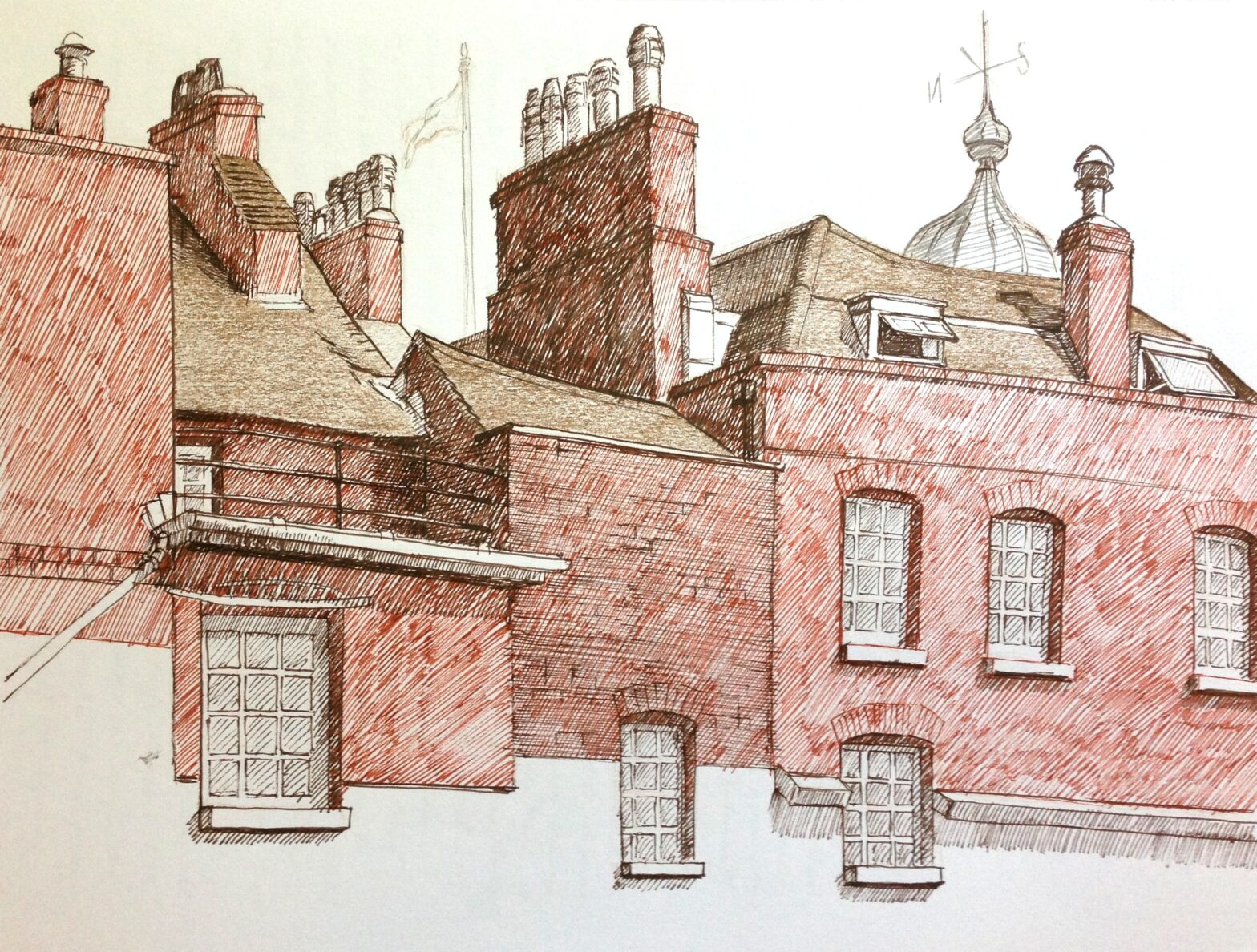The Tate Britain has an exquisite exterior, ominously pitted along one side from bombs during WWII. I was thrilled to find Henry Moore drawings and sculptures, as well as video footage of the artist at work. It showed him bending the armature in a vise, applying plaster in layers to achieve the form, fine tuning the form with a rasp, and then (with help), casting in bronze. The molten bronze looked as white as the sun and must have been heavy, as three men staggered under its weight. It splattered as they poured, from three-foot handles to keep a safe distance away. I’d hate to think of a burn from even a tiny drop! Moore said he would rather see his sculptures outdoors than inside the most beautiful buildings, but I was glad they had a collection of them at Tate. They also had several of his crayon-resist drawings from the Tube during the war, when they were used as bomb shelters.
Here my respect for Turner was cemented. He bequeathed his art to England, so the Tate had a huge collection of his work. I got to see his watercolors, which he started with color washes, and the beginnings of his oil paintings, which he started with washes of oil thinned with spirits. (Another technique Domenic shared with us; he is such a brilliant teacher.) I ended up buying a book to read on the airplane. Turner was born of working parents and was a prodigy. His early ship paintings demonstrate what a master of detail and illusion he was, and he cranked out paintings in batches. On one sign it said he would often work three or four at a time, loading up his brush with one color and moving from painting to painting applying that color. When he came back to the first canvas, he would load up the next color and continue on. Some of his early work took on its greatest power from a distance, when details were lost and the strength of the light and darks becomes dominant. Did he realize this himself, as he moved away from detail in his later images?
Until this visit, I was not aware of how important British visual artists have been. Writers, yes, I have known that always. But I never stopped to think about how many important painters and sculptors have come out of England. Must be the long dark days and all that rain. England has produced so many artists and writers; what else to do when it rains? It also produced many explorers; they probably wanted more sun! And then there is the pub contingent, of course.
